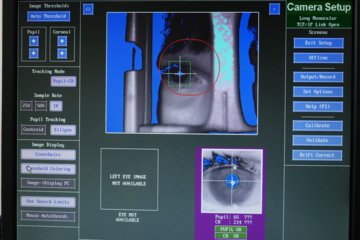Serum Institute of India acquires rights to tuberculosis vaccine
Researchers continue to refine classic tuberculosis vaccine
Hopes are high for a new and improved tuberculosis vaccine: Serum Institute of India is planning on taking a promising vaccine - originally developed in Germany - and introducing it into the clinical setting. Studies have shown that the new vaccine is more effective and better tolerated than currently available options. By signing a contract with the Hannover-based Vakzine Projekt Management GmbH, Serum, one of the World’s leading vaccine manufacturers, has effectively secured the license to the various patents and technologies related to the new vaccine.

Scientists from the Max Planck Society, Vakzine Projekt Management GmbH, and the Helmholtz Centre for Infection Research co-developed the candidate vaccine called VPM1002 as part of a joint research project. The substance is currently undergoing phase II clinical testing.
“This represents an important step in the fight against the deadly threat posed by tuberculosis – an infection that affects over two billion people worldwide,” says Bernd Eisele, CEO of Vakzine Projekt Management, a Helmholtz Centre spin-off based in Hannover, Germany. “The new vaccine is showing a lot of promise, the concept itself is highly innovative,” adds Umesh Shaligram, Serum Institute of India’s director of Research and Development. The company is headquartered in Pune, India. “We are looking forward to working with Vakzine Projekt Management and hope that over the next years, we will see the vaccine successfully secure market authorization for global distribution.” According to Vakzine Projekt Management estimates, the Indian pharmaceutical company is one of only a handful of potential partners that are qualified to take on the task. Bernd Eisele says: “Only an experienced and specialized developer and global player like Serum is able to ensure that the vaccine will be made available to people everywhere at a fair price.”
VPM1002 is based on another vaccine that was first introduced in 1921 called Bacillus Calmette-Guérin, or BCG. The vaccine, which consists of attenuated pathogens, prompts the human immune system to mount a response against the germ. Today, the use of these types of live vaccines has become standard and is even used as part of “classic” MMR immunizations. The special thing about VPM1002 is that it is being continually refined using gene technology, causing it to prevent diseases much more effectively and safely than its predecessor. Preclinical studies, two phase I clinical trials, and one phase II clinical trial have already met expectations.
Stefan Kaufmann, founding director of the Max Planck Institute for Infection Biology in Berlin, developed the scientific basis for VPM1002. VPM then developed the new vaccine after licensing it from the technology transfer organization Max Planck Innovation and with support from Helmholtz Centre for Infection Research basic science research, ultimately taking it to the clinical trial stage. “To this day, BCG is still the single most commonly administered vaccine,” says Kaufmann. However, at this point, it frequently no longer works as well as it used to in the past. Kaufmann’s ultimate goal is making BCG more effective and, at the same time, safer.
Leander Grode also played an important role in the new vaccine’s development – first as one of Kaufmann’s scientific associates, and now as a project manager at Vakzine Projekt Management. “We successfully tweaked the original vaccine to be better at activating the human immune system and thus afford more effective and safer protection against the tuberculosis pathogen,” explains Grode.
MB/HR












